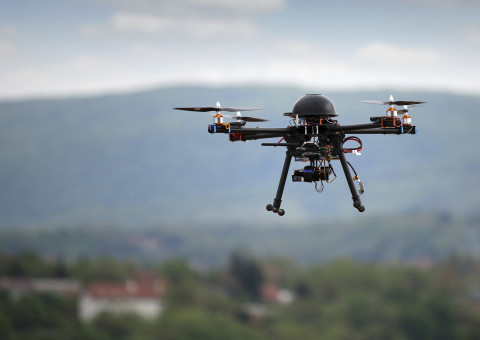Utilities across the country have been looking at deploying drones to improve operational efficiency and save money. In 2012, the Electric Power Research Institute (EPRI) flight-tested unmanned aerial systems, or UAS, and said they could “dramatically improve” power-line inspections and reduce outage times after storms. Sho-Me Power Electric Cooperative in Marshfield, Mo., is just one example; the co-op recently received approval from the Department of Transportation to use UAS to inspect substations and microwave towers.

Now EPRI says UAS can “provide significant savings” on labor costs for operating and maintaining large photovoltaic systems.
The lowest-hanging fruit is solar panel inspection and data collection, the Palo Alto, Calif.-based research consortium says in a white paper, “Utilizing Unmanned Aircraft Systems as a Solar Photovoltaics Tool.” After that, utilities will likely use UAS for site analysis and environmental assessment before construction and for cleaning panels and monitoring vegetation growth near arrays.
Panel inspection could be made more cost effective by equipping UAS with infrared thermography cameras to look for “hot spots” caused by component failures.
“Aerial systems have the potential to provide significant benefits and savings for the electric utility industry,” says EPRI’s Tom Alley, vice president of generation. “EPRI is collaborating with its members to further characterize, develop, and validate a variety of applications.”
